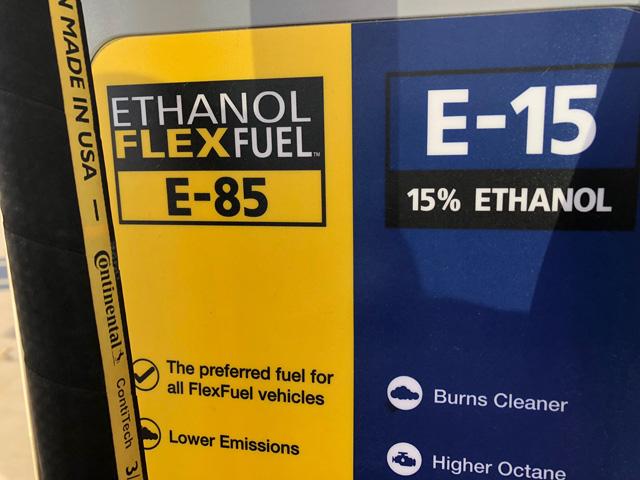Ag, Biofuel Groups Defend E15 in Court
Petrochemical Group Claims E15 Not Substantially Similar to E10
OMAHA (DTN) -- Agriculture and biofuel groups are mounting a defense of EPA's year-round E15 approval, arguing in a court brief filed in a federal appeals court that the agency was within its legal parameters with its action.
Back in May, the American Fuel and Petrochemical Manufacturers challenged EPA's action. The group argued that E15 is not a fuel substantially similar to E10, that the Reid vapor pressure waiver does not apply to blends higher than E10, and that the agency did not have the authority to "reopen" E15 waivers it granted for use in vehicles 2001 and newer.
The Reid vapor pressure waiver is a measure of the volatility of gasoline.
In a court brief filed with the U.S. Court of Appeals for the District of Columbia Circuit on Aug. 21, intervenors in the case, which included the National Corn Growers Association, Renewable Fuels Association and Growth Energy, argued EPA's action was consistent with the Clean Air Act and congressional intent and extending a waiver to E15 was appropriate because fuel volatility decreases as ethanol content in gasoline rises above 10%.
When the agency approved year-round E15 sales, it concluded the fuel was "substantially similar" to E10 blends, essentially eliminating the summer driving restriction in some areas of the country.
Ethanol and gasoline are both low volatility. When the two fuels are mixed, the volatility spikes, but only at blends just below E10. As more ethanol is blended with gasoline, the vapor pressure decreases, which essentially means E15 reduces vapor pressure.
For years, the ethanol industry called on the EPA to equalize the Reid vapor pressure regulations for E10 and E15 during the summer driving season.
P[L1] D[0x0] M[300x250] OOP[F] ADUNIT[] T[]
Because of those requirements, E15 has largely not been available to some wholesale suppliers and retailers during the summer. The industry contends adding 5% more ethanol in the summer would actually reduce tailpipe emissions.
Ethanol increases the Reid vapor pressure, which measures the release of volatile organic compounds into the atmosphere. The Reid vapor pressure for gasoline is the lowest, or most stringent, during the summer months when the weather is hot.
"This disparate treatment of E10 and E15 made little sense," the groups said in their brief.
"Yet adding 5% more ethanol to E10 uses more ethanol and lowers volatility and evaporative emissions. The final rule removes these unwarranted discrepancies between E10 and E15. Petitioners challenge the final rule on two main grounds, but both are meritless, and one they lack standing to assert. More broadly, petitioners do not and cannot defend the irrational status quo ante they seek to reinstate."
On June 10, 2019, EPA issued a final rule to treat E10 and E15 the same way.
Because a blend with more than 10% ethanol still holds 10% ethanol within it, EPA concluded any blend with at least 10% ethanol may receive a Reid vapor pressure waiver, including E15.
"First, petitioners challenge EPA's interpretation of the (Reid vapor pressure) allowance," the ag and biofuel groups said in the brief.
"It makes no sense that this defense would be available to higher ethanol blends but the (Reid vapor pressure) allowance itself would not. Moreover, E15 has more ethanol and lower volatility than E10 and reduces evaporative emissions, better serving (the statute's) goals. And Congress rejected a proposal that would have capped the 1-psi allowance at 10%."
With regard to the AFPM's challenge of EPA's finding E15 is "substantially similar" to E10, the groups argued the agency only had to make a finding E15 is similar to at least one already-approved fuel.
AFPM argued E15 would need to be substantially similar to all fuels, including diesel.
"Critically, Congress did not limit this defense to blends where the ethanol portion 'does not exceed 10%,'" the groups argued.
"This problem, moreover, is not new. EPA has had multiple substantially different certification fuels since before (the statute) was enacted in 1990. So on petitioners' reading, the sub-sim requirement was dead on arrival -- it never could be met for any new fuel. EPA has never rejected a new fuel because it was substantially similar to one certification test fuel but not a second, let alone all such fuels."
Todd Neeley can be reached at todd.neeley@dtn.com
Follow him on Twitter @toddneeleyDTN
(c) Copyright 2020 DTN, LLC. All rights reserved.




